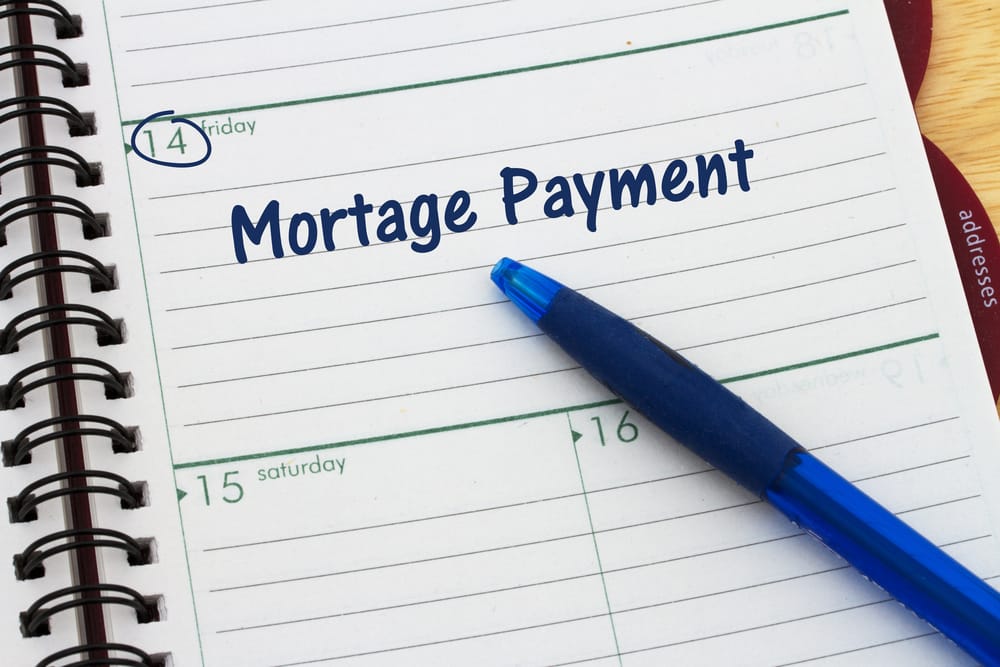Mortgages today are fully amortized. No more of this “negative amortization” stuff or “payment option” loan programs where mortgage loans would actually increase over time instead of being paid down. Thank goodness forbi-weekly mortgage payments.
When a mortgage company issues a loan today, the mortgage has specific payment terms based upon a predetermined loan term. The borrowers know if they make regular payments on time each month, the loan will be paid down with each monthly payment. In the beginning of a new fixed rate mortgage, a portion goes toward interest and a portion to the outstanding loan balance. Early on, more of the monthly payment goes toward interest and less so as the loan ages because the interest rate is based upon the outstanding loan balance.
For example, let’s take a 30-year mortgage with a loan amount of $300,000 and an interest rate or 3.50%. The principal and interest payment is $1,347 and will be so until the loan is paid off or otherwise retired. In the very first month, $875 goes toward interest to the lender and just $472 to the outstanding loan. Later, let’s say in the 60th month, or after five years, the payment of $1,347 remains the same but in the 60th month, $560 goes to directly to the principal balance while $786 toward interest. It isn’t until 20 years later that the split changes when $669 goes to the loan balance and $677 toward interest. In the very last month, $1,343 goes to pay off the loan and just $3.92 to the final interest payment to the lender. So how can you speed that up? How can you reduce your principal balance faster without having to shorten the loan term and increase your monthly payments? Shorter loan terms can make some loans too expensive in order to qualify.
You can shorten the loan term by paying extra on the loan. You’ll be hard pressed today to find any mortgage that restricts extra payments on your mortgage. The Consumer Financial Protection Bureau, or CFPB, restricted the use of prepayment penalties when it issued “Qualified Mortgage,” or QM guidelines. Loans that receive QM approval not only provide borrowers with solid loan choices but also protects lenders from litigation. Lenders approve loans using QM standards in order for this protection. So go ahead and make that extra payment.
Many times, this extra payment comes in the form of a quarterly or annual bonus. Perhaps a sales representative received a larger than normal sales commission and uses the extra funds to pay down the mortgage. Or an unexpected inheritance arrives. Using the very same $300,000 loan at 3.50%, if the borrowers make a one-time payment of say $20,000 in month 13, the loan is paid off completely in 26 years.
But not everyone is so fortunate to get a lump-sum money bomb. How can someone pay down their mortgage without making such a large cash contribution? For one, they can make smaller, regular monthly payments and two, they can take out what is called a “bi-weekly” mortgage.
What, exactly, is a bi-weekly loan?

Bi-weekly Mechanics
The bi-weekly mortgage option has been around for several years and simply means instead of making one payment on the first of every month, payments are made every other week instead. In essence, you’re making 26 payments per year instead of 12. This results in one extra payment per year and shortens the 30-year loan term from 360 months by almost four years saving nearly $27,000 in interest. This is just by making payments every other week instead of once per month. And the benefit is the difference in payments each month is more manageable compared to making one large lump sum or pouring hundreds of extra dollars each month toward the loan balance.
Setting It Up
A biweekly mortgage can make sense but there’s no reason to pay another third party in order to set up a biweekly mortgage plan. Your mortgage company wants the full amount each month on the first of the month and won’t accept a payment less than what is owed, regardless of any biweekly intentions. So, there is a small industry that helps you make biweekly payments. For a fee, these companies will make biweekly payments on your behalf. You don’t make the payments to your lender but to the company managing your new biweekly payments. And it’s very likely you’ve never heard of any of them.
A couple of things here. First, you’re relying on this third party to make the payments on time and second, the lender doesn’t accept the full payment until after the full payment amount is made with subsequent payments.
So, why pay someone else to do something you can do on your own?
Good question. And the answer is you probably shouldn’t. Instead, do the same math and make the payments on your own but in a different manner.

How so?
Remember, you’re making 13 payments per year instead of 12. So what do you do? Take your regular monthly payment and divide by 12 then add that amount to each mortgage payment you make each month. It works out in the very same manner except that your payment is applied when received and doesn’t have to wait for “catch-up” payments to be applied to your loan balance.
Bi-weekly payment popularity rises and falls over the years and used to be more popular than they are today. However, with access to the web and more online transactions made, there really isn’t much reason at all to pay a bi-weekly mortgage payment processor to do what you can do on your own.


